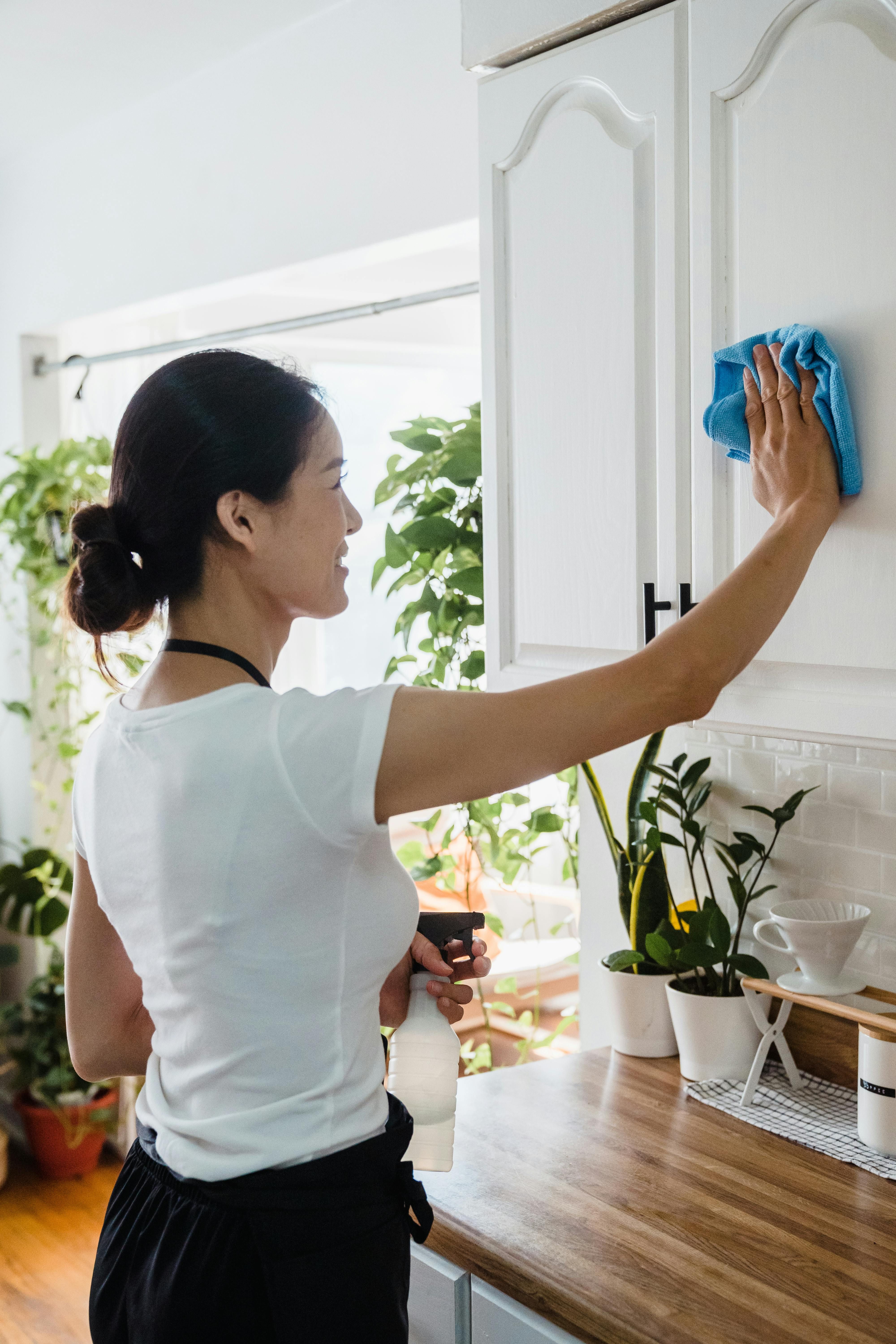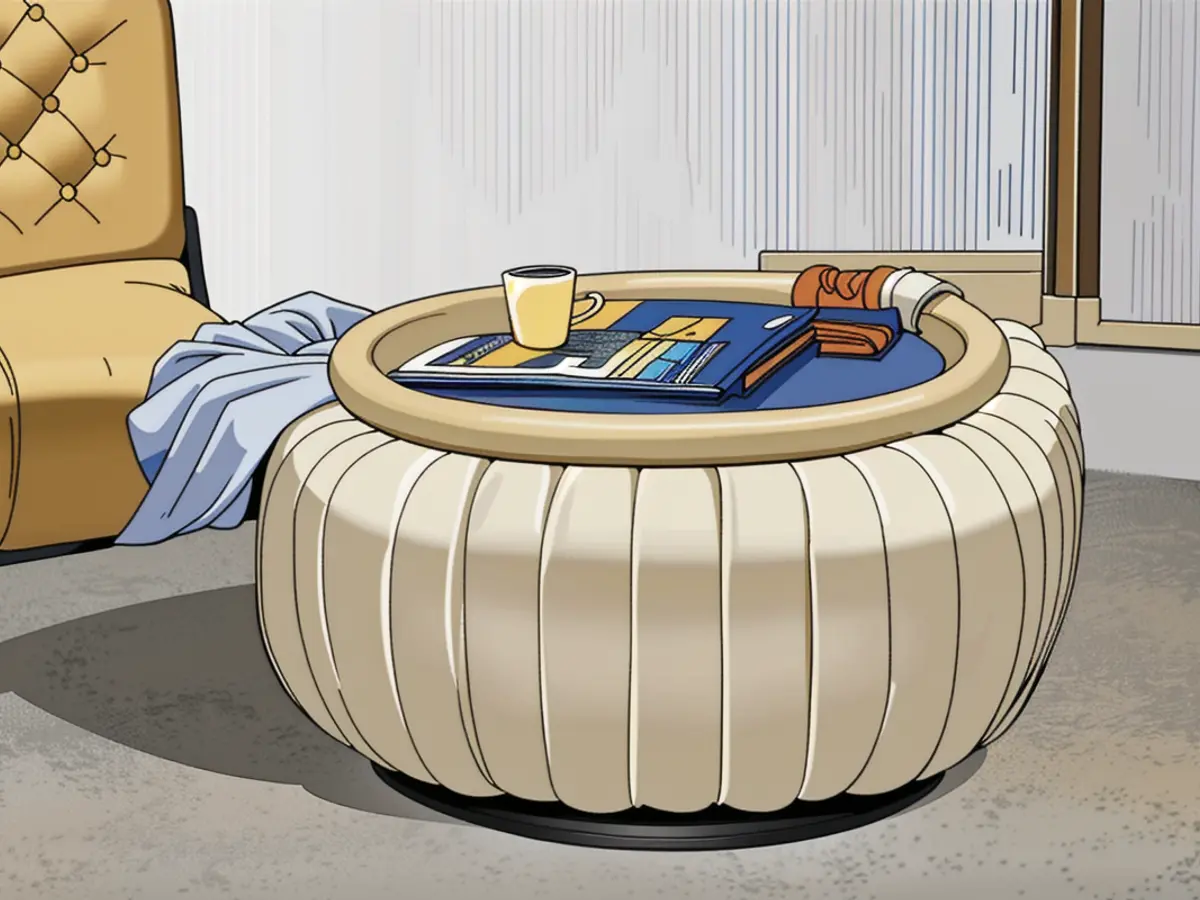Cleaning Guide for Laminate Cabinets: A Detailed Walkthrough
Freshen up Your Kitchen: A Straightforward Guide to Keeping Your Laminate Cabinets Spick and Span
Let's face it, kitchens can get grubby fast, and your laminate cabinets are no exception. Here's how to clean them like a pro, ensuring they stay in tip-top shape.
Whether you've opted for laminate cabinets due to their budget-friendliness, durability, or the plethora of design options available, one thing's for sure—they're a popular choice for families who like to keep life simple. However, laminate ain't indestructible, and neglecting regular maintenance can mean a shortened lifespan for these babies.
- Jacqueline Stein is a professional cleaner and the owner of Home Reimagined in Austin, Texas.
- Ryan Knoll is the founder of Tidy Casa, a home cleaning service.
Taking a Closer Look at Laminate Cabinets
Laminate cabinets are essentially a composite of man-made core materials (think MDF or particle board) covered in a thin layer of plastic laminate, giving them a sturdy, easy-to-clean surface. According to Stein, their lightweight nature and budget-friendly price make them a go-to choice for busy families.
But it's not all sunshine and rainbows. Knoll warns that too much moisture can lead to warping or peeling, which is far from ideal. And, if you're not careful with hot pans or sharp objects, they can quickly succumb to scratches or dents.
Clearing the Decks Before You Start
Preparation is key to a successful laminate cabinet clean! Follow these steps to get ready to get your clean on:
- Empty your cabinets: If you're going for a deep clean, Stein suggests clearing everything out to make the task more manageable.
- Dust first: Wipe away crumbs and dust with a dry cloth or duster to prevent scratching when cleaning.
- Remove handles: Knoll suggests taking off the handles for easier cleaning. This makes it simpler to clean around them, although it may seem like a bit of extra work.
- Opt for soft materials: Avoid using anything abrasive, and always use a soft cloth or non-scratch sponge to clean your cabinets.
- Be water-wise: Avoid using excessive water as this can damage the laminate. Be gentle when cleaning corners and seams, and always dry the cabinets afterwards.
- Protect your counters: Cover your counters with a towel or something to catch drips and dust knocked down during the cleaning process.
The Step-by-Step Guide to Cleaning Your Laminate Cabinets
- Mix a few drops of mild dish soap with warm water and dip a soft cloth or non-scratch sponge in the solution.
- Wring out the cloth or sponge really well, making sure it's not dripping wet.
- Wipe down the cabinets with the damp cloth or sponge.
- Dry the cabinets immediately using a dry cloth to prevent water damage.
For extra-tough stains or grease buildup, create a vinegar-water mix (equal parts) or baking soda paste (for those really persistent spots). Use these solutions carefully, avoiding contact with any dark-colored cabinets, as they can cause damage over time or with too much pressure.
Whatever you do, avoid using bleach, ammonia, or abrasive scrubbers, as these can leave unsightly scratches on your laminate cabinets.
Tackling Stubborn Stains and Marks
- If something has really set in, make a paste with baking soda and a little water and gently rub it onto the affected area.
- For scuffs, you can try using a Magic Eraser, although it's best to use this sparingly and only on light-colored cabinets to prevent damage to the finish.
- Vinegar can also help with scuff marks, but it's best to dilute it and use it sparingly to avoid any unwanted side effects.
The Importance of Regular Cleaning and Maintenance
- Daily: Perform a quick wipe-down after cooking or whenever you notice grease buildup, and wipe regularly to keep dust and grime at bay.
- Weekly: Focus on high-use areas near the stove and around knobs for a more thorough clean.
- Every Few Months: Empty cabinets, clean inside, check for peeling edges, and touch up any minor damage. "Also, clean the hinges, shelves, and anywhere else," says Stein.
Adapting Your Cleaning Schedule to the Season
- Spring and Fall: Give your cabinets a full cleaning, both inside and out, during these transitional seasons. This includes wiping down shelves and performing a deep clean on the exterior surfaces.
- Winter (Holiday Season): If you're cooking more during the holidays, clean high-touch areas more frequently to keep grease buildup under control.
- Summer: If you live somewhere humid, be extra cautious about moisture exposure to prevent peeling during the summer months.
Frequently Asked Questions
- What are the best cleaning products for laminate cabinets?
- Dish soap: Good for everyday cleaning and a safe choice for laminate surfaces.
- White vinegar and water (50/50): Effective for cutting grease without causing damage to the surface. Remember to dilute vinegar when using it, as undiluted vinegar can dull the finish over time.
- Baking soda paste: A useful solution for tough stains.
- Microfiber cloths: Soft and won't scratch the laminate.
- Magic Eraser: Helpful for scuff marks; however, use caution and sparingly, especially on dark-colored cabinets.
- Can I use vinegar to clean laminate cabinets?
- Yes, you can use vinegar to clean laminate cabinets; just make sure to dilute it to prevent damage to the surface.
- What should I do if my laminate cabinets get scratched?
- Touch-Up Kits: For minor scratches, consider using a touch-up kit sold at hardware stores.
- Laminate Repair Kit: For deeper gouges, a laminate repair kit may be necessary.
- How can I prevent my laminate cabinets from getting damaged?
- Go Easy on Them: Avoid slamming cabinet doors to protect the hinges and the surface.
- Use Bumpers: Consider using bumpers to help with soft closing and prevent damage.
- Maintain a Safe Distance: Keep your appliances (toasters, coffee makers) away from the cabinets to prevent heat damage.
- Whether you're a fan of contemporary kitchen design or southern living, keeping your laminate cabinets clean is crucial, especially in Austin where homeowners might appreciate advice from a professional like Jacqueline Stein of Home Reimagined.
- To maintain the longevity of your laminate cabinets, it's important to follow proper cleaning methods, avoiding abrasive materials and excessive water, as suggested by Tidy Casa's Ryan Knoll.
- Before starting the cleaning process, it's advisable to clear the decks, emptying cabinets, dusting, and removing handles to ensure an efficient clean without causing scratches.
- Regular maintenance, including daily wipe-downs, weekly focus on high-use areas, and a deep clean every few months, will help keep your laminate cabinets looking new, so you can continue to enjoy their durability and budget-friendliness for years to come.








